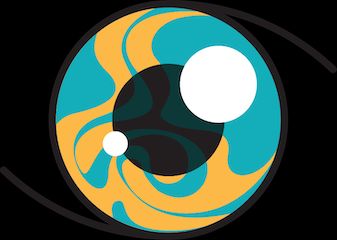
Your hair color is determined by a type of pigment called melanin. As you age, the amount of melanin in your hair naturally declines, which causes your hair to appear gray and eventually white.
Along with the hair on your head, your eyebrows and eyelashes can turn gray or white with age. The graying process often starts with a few hairs before spreading.
White eyelashes are usually caused by the natural aging process, but they can be a sign of an underlying medical condition. Most of these conditions aren’t serious, but some, such as thyroid disorders, require medical attention.
Let’s examine some of the most likely causes of white eyelashes and explain when you should call a doctor.
Here are some of the most likely reasons you may develop white eyelashes.
Aging
Aging is the most common reason why eyelashes go white.
Your hair tends to lose melanin as you age. As melanin declines, your hair turns gray and later turns white as levels continue to decrease.
A 2018 research review showed that about
In a
The highest amount of eyelash whitening occurred in people between ages 71 to 80 with 14.7 percent of people experiencing it to some degree.
Vitiligo
Vitiligo is a condition that causes white patches to form on your skin due to loss of melanin. It’s not entirely clear what causes vitiligo, but the presence of certain genes and a family history of autoimmune disorders may be risk factors.
If patches of vitiligo form in areas where hair grows, it can cause the hair to turn white due to lack of melanin, according to the National Health Service.
Blepharitis
Blepharitis is inflammation of your eyelids that can be caused by:
- mites or lice
- bacterial infections
- medications
- malfunctioning of your oil gland
Some people who develop blepharitis develop eyelashes that turn white, fall out, or grow in a strange direction.
Other symptoms include:
- itchy, inflamed, or swollen eyelids
- burning eyes
- oily eyelids
- light sensitivity
- crusty eyelashes
- watery or red eyes
- feeling like something is in your eyes
Alopecia areata
Alopecia areata is an autoimmune condition that causes your hair to fall out in patches. Alopecia areata often affects the scalp and can cause hair loss ranging from small patches to complete baldness.
It can also cause patchy hair loss that affects your:
- eyebrows
- eyelashes
- facial hair
- body hair
A 2019 research review showed that it is common for people with alopecia areata to experience temporary white hair when hair regrows. Sometimes, white hair is permanent.
Genetics and hormones
Sometimes hair can develop in strange ways due to gene mutations or hormonal factors. Some hairs might abnormally turn white for no apparent reason even in young people and may not be linked to any particular medical conditions.
Stress
The
Poliosis
Poliosis is a patch of white or gray hair on your scalp, eyelashes, or other parts of your body. It can occur at birth or can appear suddenly at any age. Poliosis itself isn’t harmful, but it may be triggered by some medical conditions like thyroid disorders and vitamin B12 deficiency.
Thyroid disorder
A thyroid disorder can cause premature white hair due to changes in hormone levels that affect your melanin production. Thyroid disorders are also associated with poliosis.
Vitamin B12 deficiency
Developing premature white hair can be a sign of vitamin B12 deficiency. Vitamin B12 deficiency can be caused by malnutrition or a condition called pernicious anemia, when your gut can’t properly absorb vitamin B12 from your food.
Smoking
A
A single long white eyelash may grow in the absence of any particular medical condition. A
In the 2015 case study, doctors found no physical abnormalities in the girl. She had a family history of early graying, but otherwise had nothing else remarkable in her medical history.
Another
Many of the same conditions that can cause white eyelashes in adults can cause them in children. Some possible explanations include:
- thyroid disorder
- vitamin B12 deficiency
- poliosis
- blepharitis
- genetics or hormones
- vitiligo
- alopecia areata
White eyelashes by themselves don’t require treatment, but it’s important to treat other symptoms if they’re caused by an underlying condition.
Hair dye or plucking
If you’re bothered by the appearance of your white lashes, one option is to dye them. If you only have one or a few white hairs, you could also try plucking them.
Lifestyle or dietary changes
If stress is contributing to your white hair, reducing stress may help improve your overall health but is unlikely to reverse graying. If you’re low in vitamin B12, you may need to make dietary changes.
Medication
Many types of thyroid disorders are treatable with medication. Blepharitis and vitiligo may also require medication for treatment. Alopecia areata is sometimes treated with corticosteroids.
It’s a good idea to call a doctor if you develop white eyelashes and you don’t expect that aging is the cause. Most conditions that cause white eyelashes aren’t serious, but it’s still a good idea to rule out an underlying condition, such as a thyroid disorder.
It’s also a good idea to contact your doctor if your child develops gray hair, to rule out potential health concerns.
White eyelashes can have many potential causes but few of them need to be treated. The most common cause is aging, but gene mutations, some medical conditions, and vitamin B12 deficiency can also contribute.
White hair usually isn’t a cause for concern unless you have other symptoms that indicate you may have a medical condition.









